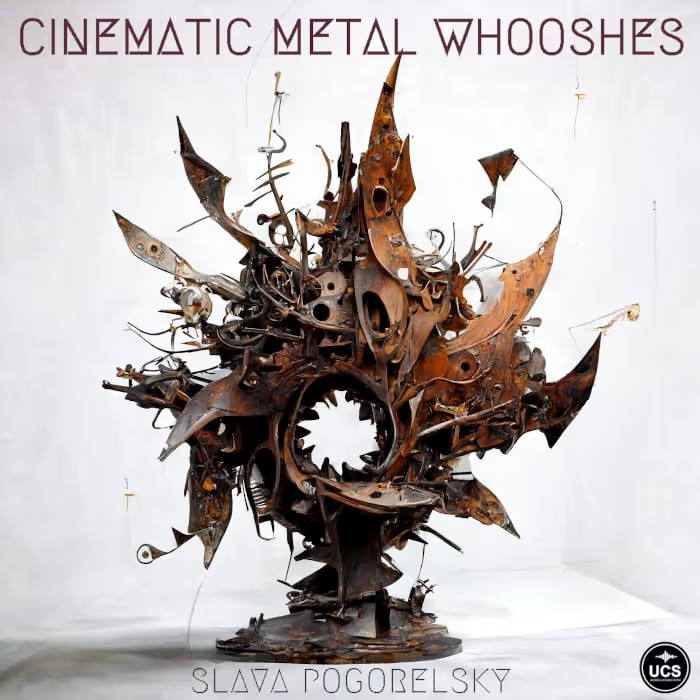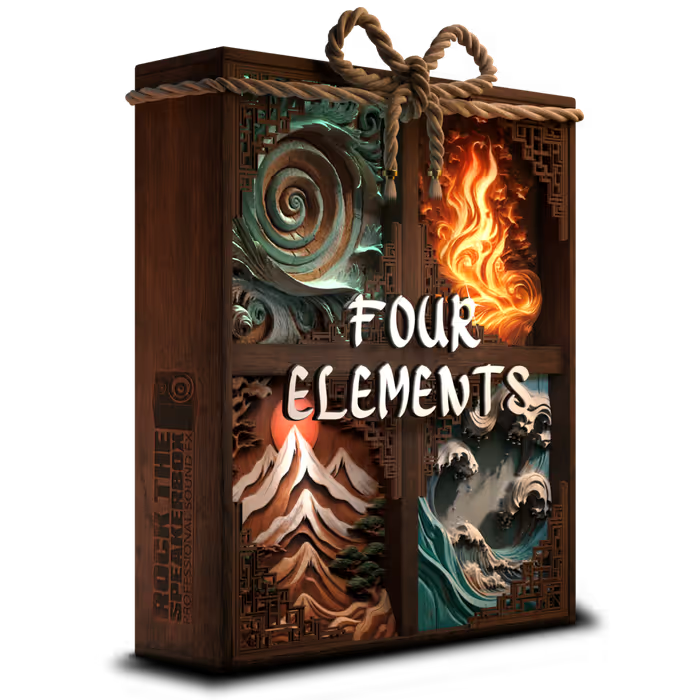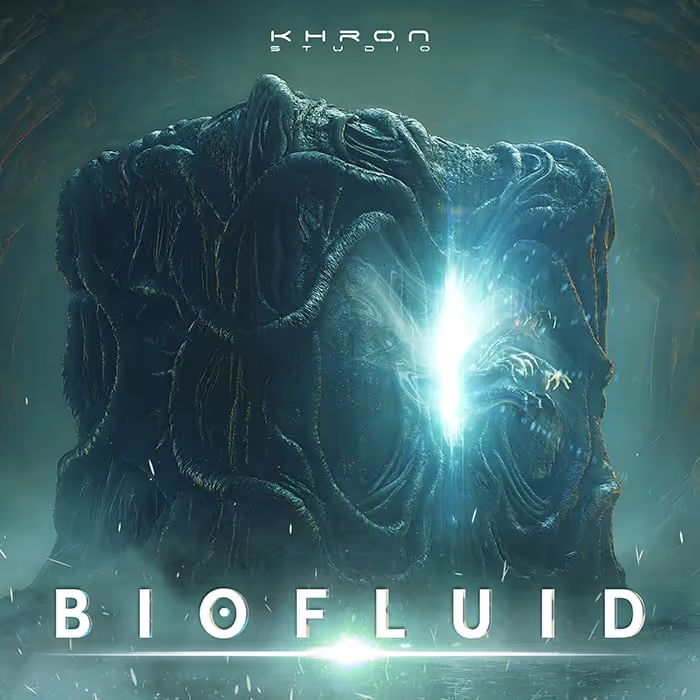Without further ado, here’s the exclusive A Sound Effect interview with Blair Witch supervising sound editor/re-recording mixer Andy Hay:
Written by Jennifer Walden, photos by Chris Helcermanas-Benge and Technicolor
Warning: May contain spoilers (and definitely contains horror!)
The official Blair Witch trailer
If you missed Adam Wingard’s horror films, like The Guest (2014) or V/H/S (2012) – both nominated for different SXSW Audience Awards, then perhaps you’ve seen his directorial skills at work on Cinemax’s new horror series Outcast, for which Wingard directed the first episode, “A Darkness Surrounds Him.” And if you still don’t know his name, don’t worry, within the next year you won’t be able to forget it because it’ll be attached to two films everyone will be talking about: Blair Witch opening today, and the upcoming Death Note, which is a live-action cinematic take on the popular Japanese manga series written by Tsugumi Ohba and illustrated by Takeshi Obata.
Wingard made a bold decision in taking on Blair Witch. While the original film, The Blair Witch Project was groundbreaking in 1999, the subsequent ‘Blair Witch’ related movies were decidedly less so. But with Wingard’s promising directorial track record, it’s exciting to see his take on the tale. Heading up his post sound team is Technicolor’s supervising sound editor/re-recording mixer Andy Hay, a long-time collaborator with Wingard. Hay is joined by sound designer Jeff Pitts. Together they’re worked on several of Wingard’s horror flicks, including another SXSW audience favorite You’re Next (2011).
How did you get involved with Blair Witch?
My partner Jeff Pitts and I have worked with Adam [Wingard] on a number of movies in the past and we’ve always had an excellent experience together. It was only natural that we would continue collaborating on this film.
What was your reaction when you learned this was the next ‘Blair Witch’ film? Did you feel compelled to pay tribute to the first film in any way?
I’m a huge fan of Simon [Barrett, writer] and Adam’s work and so naturally I was very excited to see what they were going to do with this iconic story. The original movie had such a huge impact that it really feels like an honor to be part of the team carrying that torch forward. This story picks up some time after the first movie and incorporates some footage from the first movie. So in a very direct way, yes, we pay tribute to the original. The size and scope of this film, however, is much larger than the original and so we wanted to push the envelope as far as we could while still remaining respectful and maintaining much of the spirit of the original.
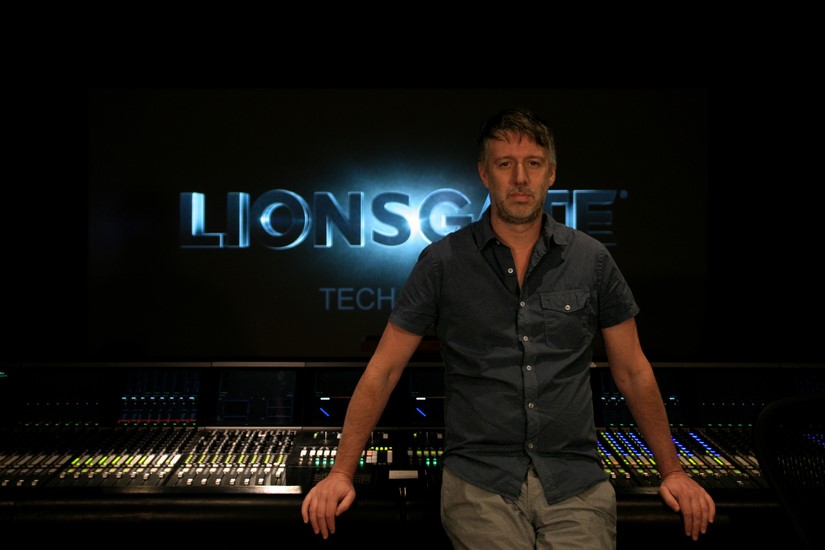
Andy Hay at Technicolor
Like the original film, this film uses handheld cameras and the footage is very shaky and raw. How did you match that in terms of sound?
The production sound mixer on the shoot, Matt Willoughby-Price, was excellent. I was actually quite shocked at how good his tracks sounded. Everyone was on an iso mic which gave me incredible flexibility in the mix. The challenge then became how to dirty up the tracks and give them a sense of realism. In reel 1, I’m actually using quite a lot of panned dialogue and also giving each camera its own sonic identity so that we feel the shift between cameras and perspectives very distinctly.
The challenge then became how to dirty up the tracks and give them a sense of realism
This was important in setting up the sonic structure and laws for the film but we decided to gently phase out that treatment over time in order that it not become distracting or taxing on the audience. Plus, it’s fun to set up rules and then break them.
Foley plays a huge part in adding realism to the film, and we were fortunate enough to work with my good friend and Foley supervisor Geordy Sincavage, who I have done a ton of films with. He had just come off of doing The Revenant and was happy to play around in the dirt and mud, and gracious enough to work within our tight schedule and budget.
There are also probably 1000 or so mic bumps that we added to the mix, which are various recordings of us banging into and rubbing up against a variety of different mics.
[tweet_box]Behind the scary sounds of Blair Witch:[/tweet_box]
Can you tell me about the Foley team?
We have a fantastic Foley crew at Technicolor but unfortunately their schedule didn’t allow them to work on the film, and so the Foley was done at an independent shop called Sinc Productions in Los Angeles, California. The nice thing about being at Technicolor is that they are really flexible with allowing supervisors to bring in talent that they are used to working with, and so working with Geordy and his team worked out perfectly.
You talk about the production dialogue being so clean that you had to go back and put in the sound of mic bumps. That’s so counterintuitive to the post process of cleaning dialogue and taking the mic bumps out.
We ended up recording a ton of mic bumps, hits, and scratches, and then peppered those sounds throughout key moments
It was like working in the opposite manner of how we are used to working, but it was great. I came up through the film ranks in the independent market. My career began from a chance meeting with an AFI student. One thing led to another and I cut my teeth on independent films where most of the time you’re really wrestling against some nasty production sound. This film was the exact inverse. We got super clean, hi-fi awesomeness for the dialogue tracks and I needed to find ways to mess them up. We ended up recording a ton of mic bumps, hits, and scratches, and then peppered those sounds throughout key moments. We were very much tuned into specific movements, like when a character whips his/her head around. That movement you would typically associate with mic noise, but there was none so we injected those bumps and hits into the sound to maintain the realism.
The score was also handled by director Wingard. How much influence did the score have on the film’s sound overall? Did it have an impact on your sound design?
That’s a great question. Adam [Wingard] is one of those people that has a natural affinity for being able to express himself through whatever medium he gets his hands on. He’s been messing around with synths for a few years now, and is completely self-taught. He came to us early on with some ideas he was putting together for the score – which is less score in a traditional sense and more like sound design in its approach. The sounds he was creating were a very natural fit for the film and also for the design work that Jeff [Pitts] was starting to build. It’s not surprising to me that Adam’s work meshed so easily with the work that Jeff and I were doing. We all seem to share a very similar aesthetic. That’s what makes our collaborations so fun and in many ways so effortless.
The trailer for the original Blair Witch Project movie from 1999
You yourself are very comfortable with music, having mixed a few film scores and composed additional music for a few games. Were you very hands on with the music for this film?
Like many in post sound, I come from a music background and fell into film work very organically after being expelled from the music industry as it was self-imploding around the time of Napster. Music is still my first love, and as such I very much enjoy mixing music as well as creating music whenever I can. This film has very little music in it however, so my involvement on Blair Witch‘s music was purely in the mix. We didn’t really have time to mix Adam’s score ahead of time as you would typically mix a score before bringing it to the stage. So I ended up mixing the score from individual elements on the stage inside of the overall sound mix.
On sound design, what were some particular sounds or scenes that stood out for you on Blair Witch? How did you create those sounds?
I wish Jeff was here to help answer this question, but he’s in Japan at the moment recording sounds for our next project with Adam (namely, Death Note). I think the obvious answer would be the sound of the creature. This was made in Symbolic Sound’s Kyma sound design software, using a variety of sound sources which are largely about experimentation. I’m happy to say I don’t think I’ve ever heard anything quite like the creature sounds that we created and I think that really stands out in the film.
One of my favorite sequences is the back break/tents erupting/running and screaming sequence that culminates in Lisa’s meltdown. I remember the first time I saw that in the cutting room and it really got my heart pumping. I think we were able to take that to a pretty high level in terms of intensity.
What’s one audio tool you couldn’t live without on this film? How did you use it?
I’m always looking for opportunities to weave a sense of motion into soundscapes and FutzBox really responded well to being modulated over time
You mean besides my ears? We used a lot of fun and quirky tools on this film – some new, some vintage, some commercially available, and some more eclectic. The one plug-in that got heavy use though this film was McDSP’s FutzBox. I had multiple busses across dialogue, effects, and Foley running through various instances of FutzBox, from gentle to radical degrees of processing. It’s a simple but really flexible and rock solid tool that makes some great sounds and responds well to being modulated over time, which I love. I’m never one to find a setting and leave a plug-in in a static setting. I’m always looking for opportunities to weave a sense of motion into soundscapes and FutzBox really responded well to being modulated over time.
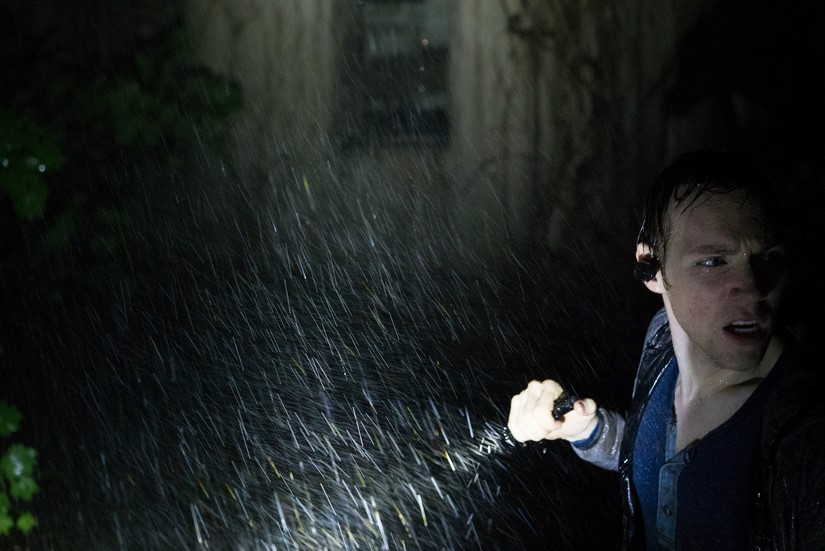
Typically when you hear the word ‘FutzBox’ you think cell phone, TV speakers, walkie-talkies, and that kind of sound emulation. But in Blair Witch, they’re in the middle of the woods. It doesn’t seem like there was much opportunity for those types of sounds. So how were you using FutzBox? What was the effect you were going for?
The set-up in the first reel is that this group is going out there and they’re using a variety of different cameras. There are earpiece cameras. There is the old style DV camera that records to tape. And then Lisa has her Canon camera. And so we wanted to find a way to give all of those different cameras their own identity. Of course you can futz by using EQ and dynamics, but what’s great about McDSP’s FutzBox, and Audio Ease’s Speakerphone, and products like that is that they do more than that. So I ended up going into some of the presets, and using those as a cool starting point. Then from there I was custom tailoring the sound. FutzBox is remarkable in terms of the variety of sounds you can get out of it. I would map all the parameters that I thought were relevant via Eucon to the Avid/Euphonix S5 console, and then I could manipulate those as I worked along. I’m trying to impart that sense of realness to how the camera mic would respond to changes in the environment or the proximity to the sound source.
Any fun field recording trips for Blair Witch? If so, what did you capture, and what did your kit include?
We didn’t have much opportunity on this one to go out and do field recording, which we typically like to do. Jeff and I were both extremely busy with other work and the time didn’t permit. When we do have time we go out with a Holophone for capturing surround ambiences, as well as Neumann spaced pairs and shotguns for specifics.
We had to go way back to the 70s to find clean recordings of wolves in their natural environment
Jeff had an idea early on that he wanted to introduce wolves into the world as part of the call and response to the machinations of the witch and the woods. We had to go way back to the 70s to find clean recordings of wolves in their natural environment. We couldn’t find any newer recordings of wolves, which is interesting to me. I don’t know if that’s a reflection of the wolf population and displacement or that no one’s simply gone out and made recordings recently. Nonetheless the recordings we did find worked out great.
The recordings of the wolves, what was the source for those?
Jeff found those sounds by digging around. It was from a guy who captured these recordings of wolves in the 70s. It was one of those things where we did a Google search and on page 39, it’s like, ‘Hey look! Someone has this stuff!’ And so we tracked the guy down and got the recordings and they were great. They were as high a quality as you could get coming from the 70s, but they worked just fine in the context of the film.
If you want to create your own horror sounds, check out this special horror sound guide by Saro Sahihi on how to create everything from gore, ghost and jump-scares, to terrifying monsters. And if you’re looking for sounds to build from, an arsenal of scary sounds await right here.
Since you didn’t have the chance to capture field recordings, what were some of the sources for your woods sounds?
A few years back, I mixed a movie called Willow Creek for Bobcat Goldthwait, which is kind of a similar setup. This young, energetic couple heads out to the woods to find Bigfoot, and all matter of madness ensues. For that film, we did go out and get some field recordings where we were banging on trees and banging on different things and capturing the sounds up-close and from a further perspective. We got all the echoes and reflectivity of the sounds of the woods.
We also used sources that we didn’t capture in the field and so I spent a lot of time dialing-in Altiverb presets and finding things that worked with different delays and reverbs. I had a pretty good handle on what a dense forest sounds like from having mixed that film years ago.
How did you incorporate those wolves into your sound design?
We make believe the wolves live out in the woods not too far off in the distance. A little bit of EQ and Altiverb goes a long way to placing them in the environment.
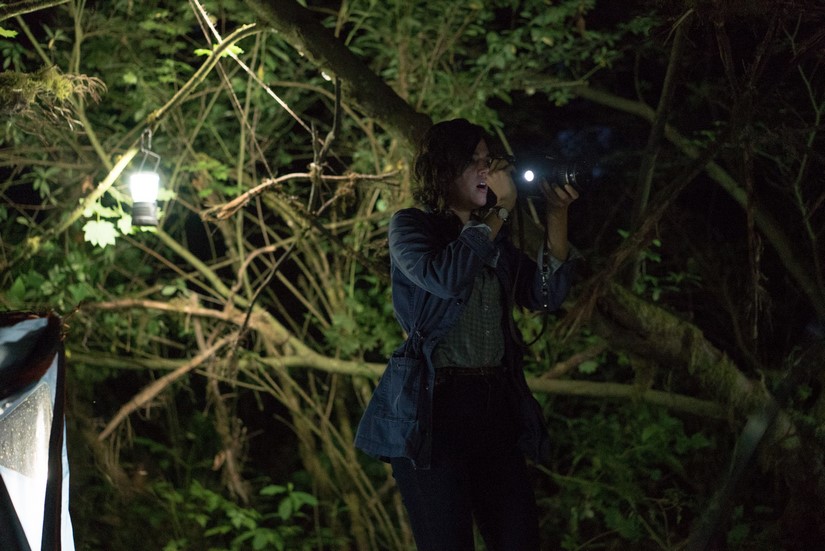
The mix: Were you the only mixer on the film?
Actually, no. I am used to mixing a lot of films solo, which is largely due to budget, but I was fortunate enough that my mix tech on the film, Greg Townsend, is also a very accomplished mixer. I handled dialogue and music while Greg handled effects. I would occasionally jump into the effects chair as needed. There’s something very liberating about being able to communicate your ideas to another mixer and have them inject their take on it rather than mixing the entire film yourself. It is physically less demanding but it also allows me to take a step back and hear the movie in a different way than what I might have in my head. Oftentimes this took us down paths of experimentation and discovery that yielded great, fresh results. I couldn’t have done it without Greg!
What were some challenges you faced during the mix phase?
The biggest challenge in the mix is typically time. We were fortunate that Jason Constantine and Eda Kowan at Lionsgate believed enough in the film and what we were doing with it to grant us several extensions on our mix schedule. They came in for playback after our first pass and loved what they were hearing and wanted us to keep going until we were all totally satisfied. I wouldn’t say that any part of the mix was particularly challenging. It was just great fun, day in and day out. Technicolor has some of the best sounding rooms that I have ever worked in and the equipment is all top notch, which made for a very enjoyable and creative mix.
Bonus: Explore the Ultimate Horror Sound Guide:

Any particular scenes that stand out for you mix-wise? Why? How did you handle them?
We took advantage of every opportunity to create an interesting mix and to go both big and small
There are so many amazing mix moments in the film and we make full use of the dynamic range afforded us by the cinema format. We took advantage of every opportunity to create an interesting mix and to go both big and small.
I love mixing club scenes. Jeff and I both have a history of DJ’ing techno. I’ve spent many late night hours in dark, sweaty warehouses and that time of my life is still very dear to me. Mixing these scenes gives me an opportunity to inject all the amazing feelings from that part of my life into the scene. It’s also a fun challenge to figure out how to make the dialogue intelligible over thumping club music and to feel the music shift as we follow our characters through different areas of the club.
In Blair Witch, Lisa’s meltdown was a particularly delicate and time-consuming sequence to get right but I think we nailed it. FutzBox, distortions, reverb, and dramatic filtering all happening on the console via Eucon control in combination with the onboard dynamics and EQ of the Avid/Euphonix S5 console over multiple passes. We probably spent two to three hours on this moment alone, trying all sorts of different things.
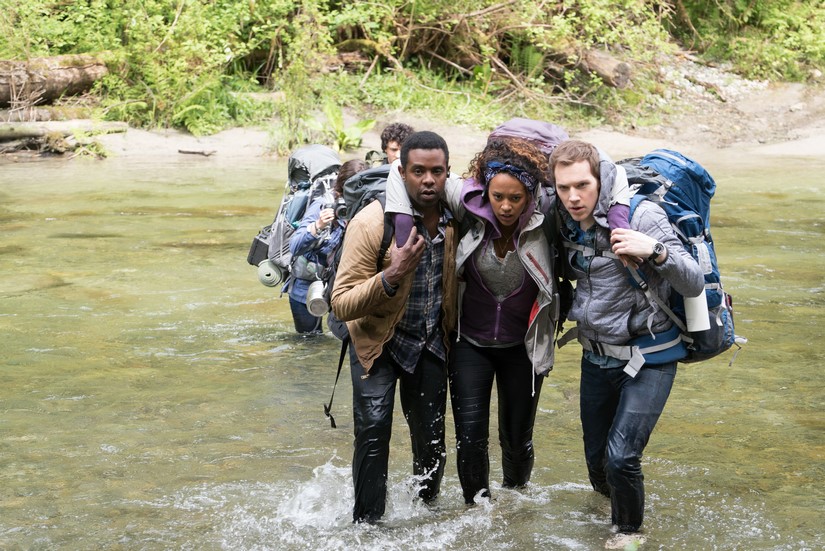
Mixing is a process of elimination, finding the best assets to tell the story in the scene. Do you feel it was beneficial to have created the sound design and then had the opportunity to mix it? Or, was it more challenging to have handled both the sound design and mix?
I always consider the mix to be an extension of the sound design of a film. Sound design to me is not just sound effects, but rather the overall soundtrack of a film, especially when we’re talking about a genre piece. I am fortunate enough to work with Jeff Pitts as my creative partner. He is a very talented individual. We are both always thinking about the final mix from day one on a project. Often times I hear the final mix in my head months before we hit the stage and then it’s simply a process of executing the necessary steps to realize that end result. There’s fluidity in what we do, from the spotting session all the way up to the print master. I suppose it is a bit like painting. To answer your question, it’s never challenging to do both, instead I see both as complementary parts of the overall process.
Was Blair Witch mixed in 5.1? What stage at Technicolor did you mix in?
We mixed this in 5.1 at Technicolor, mostly on Stage 4 (Craig Mann’s Whiplash stage), and we also got to spend a week tweaking things on Stage 1, which is one of our large flagship stages. The translation from the medium size Stage 4 to the large Stage 1 is seamless, which is really encouraging to me as a mixer, and a testament to the quality of our stages. We sourced all elements from multiple Pro Tools systems and mixed the film on the Avid/Euphonix S5 console. This is my favorite way of working over in-the-box mixing, primarily because console automation cannot be edited to death on a screen with a mouse. As such, each pass is a performance, which for me brings not only a level of enjoyment to mixing but also connects me, my ears, and my fingers in a more intimate way to what is happening on-screen.


